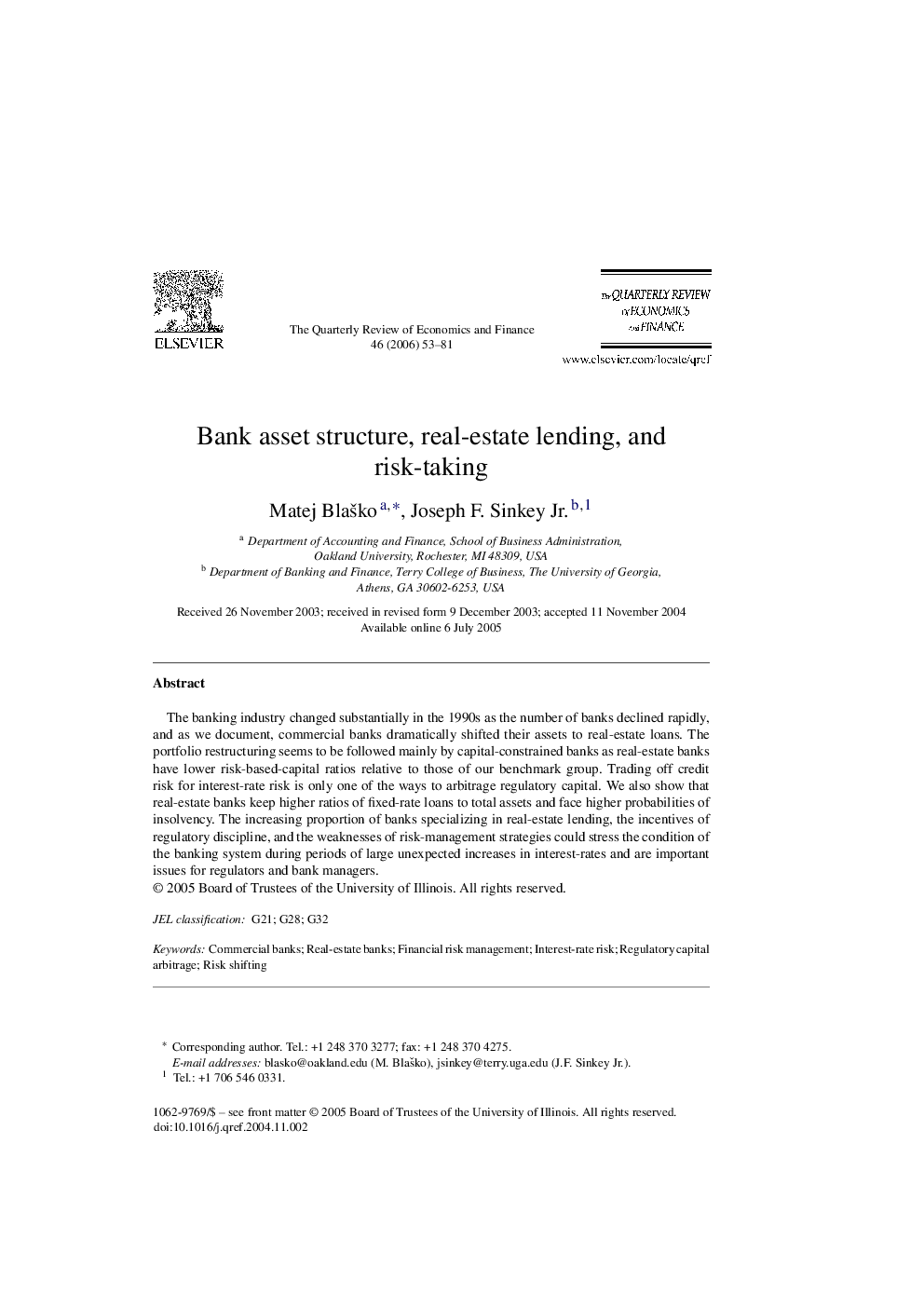| Article ID | Journal | Published Year | Pages | File Type |
|---|---|---|---|---|
| 983618 | The Quarterly Review of Economics and Finance | 2006 | 29 Pages |
The banking industry changed substantially in the 1990s as the number of banks declined rapidly, and as we document, commercial banks dramatically shifted their assets to real-estate loans. The portfolio restructuring seems to be followed mainly by capital-constrained banks as real-estate banks have lower risk-based-capital ratios relative to those of our benchmark group. Trading off credit risk for interest-rate risk is only one of the ways to arbitrage regulatory capital. We also show that real-estate banks keep higher ratios of fixed-rate loans to total assets and face higher probabilities of insolvency. The increasing proportion of banks specializing in real-estate lending, the incentives of regulatory discipline, and the weaknesses of risk-management strategies could stress the condition of the banking system during periods of large unexpected increases in interest-rates and are important issues for regulators and bank managers.
